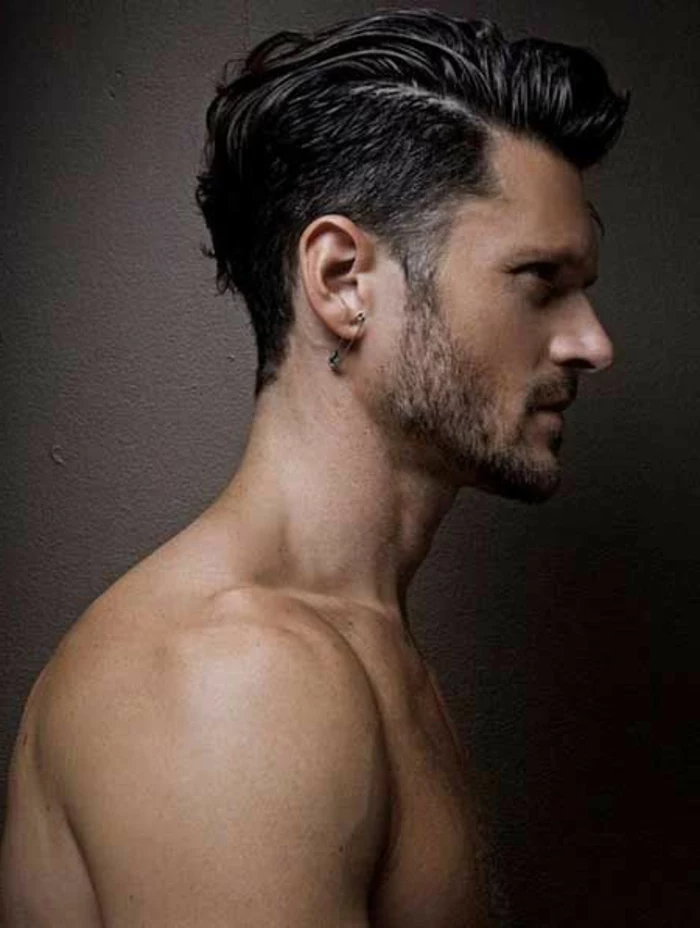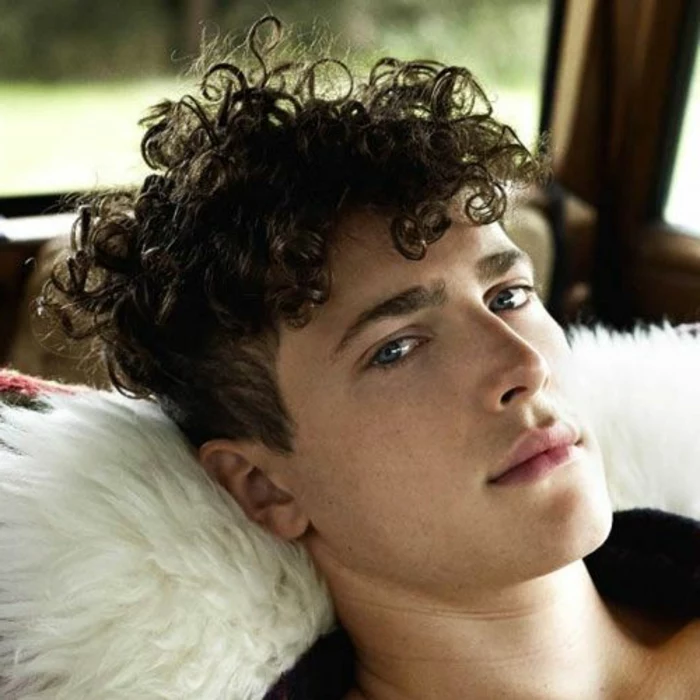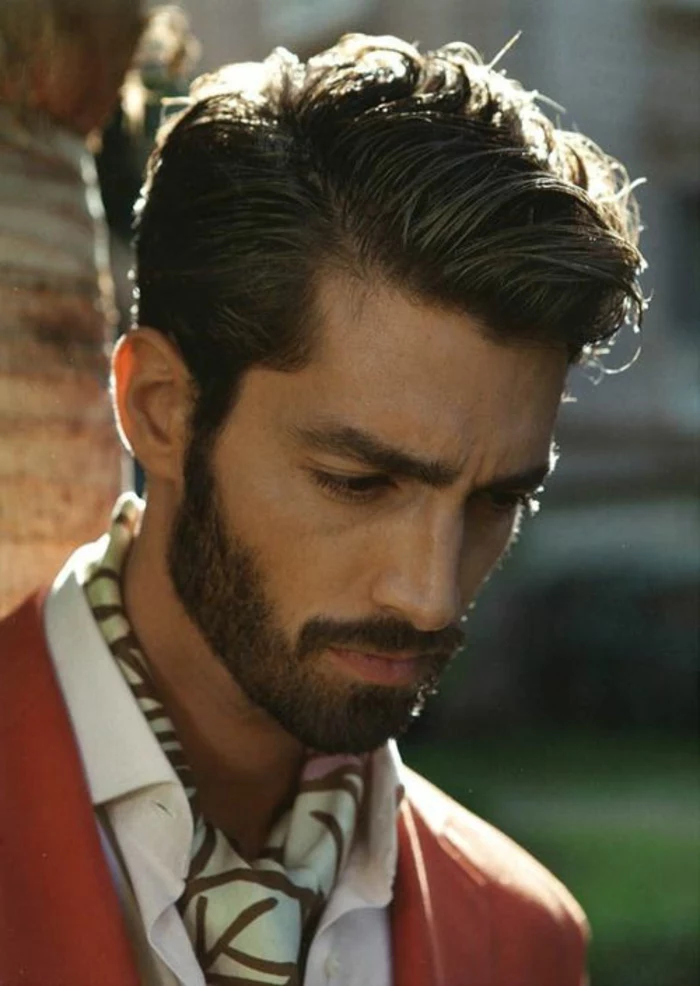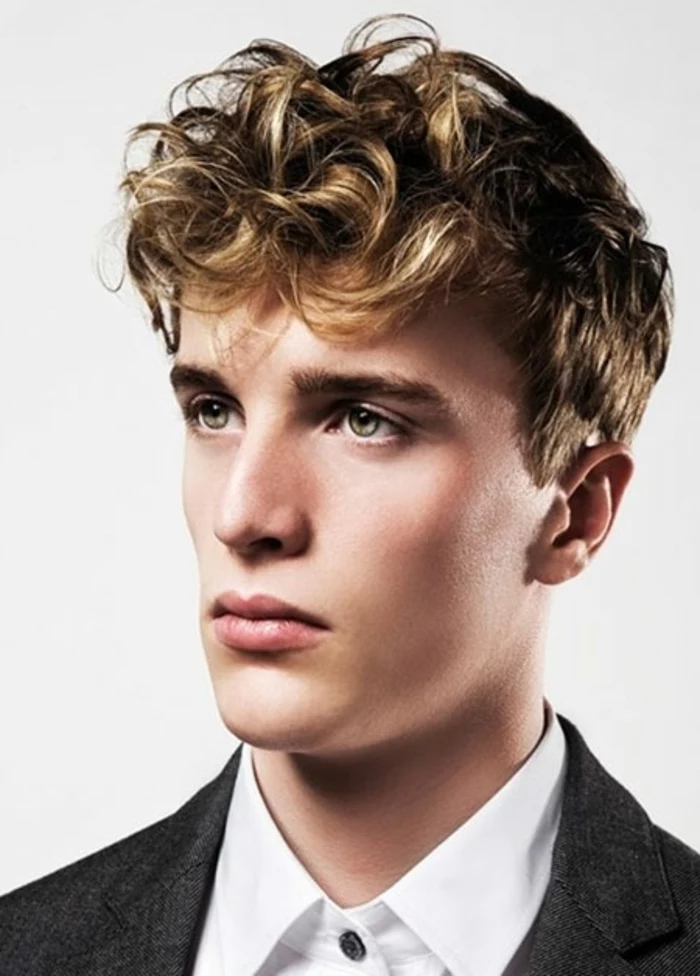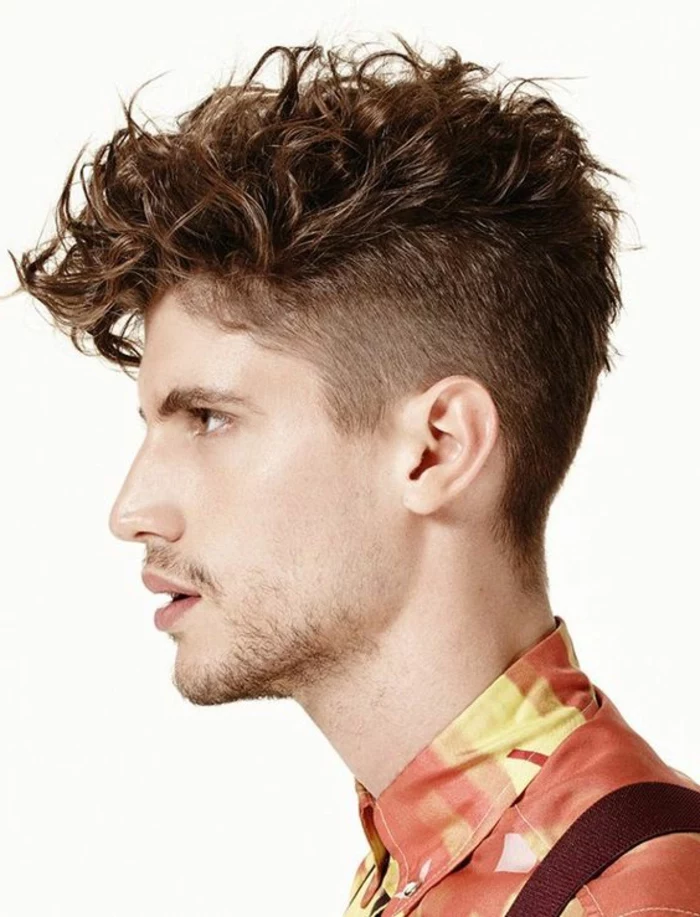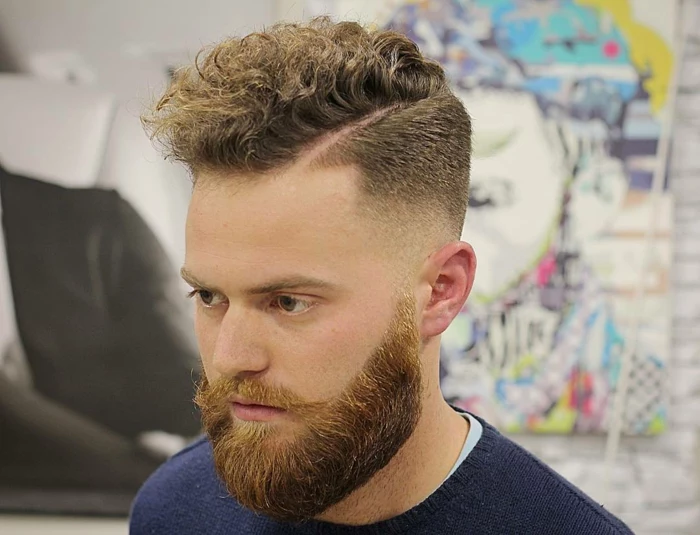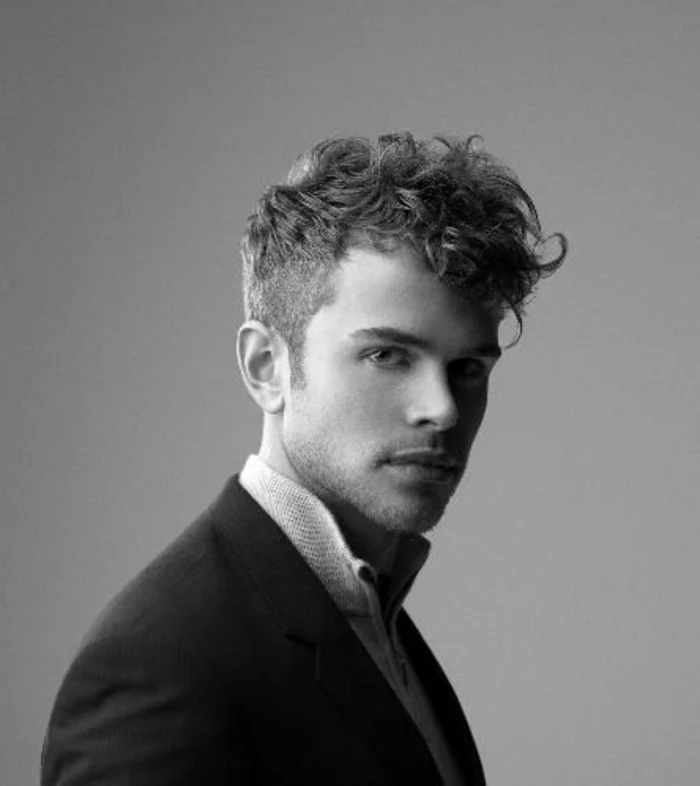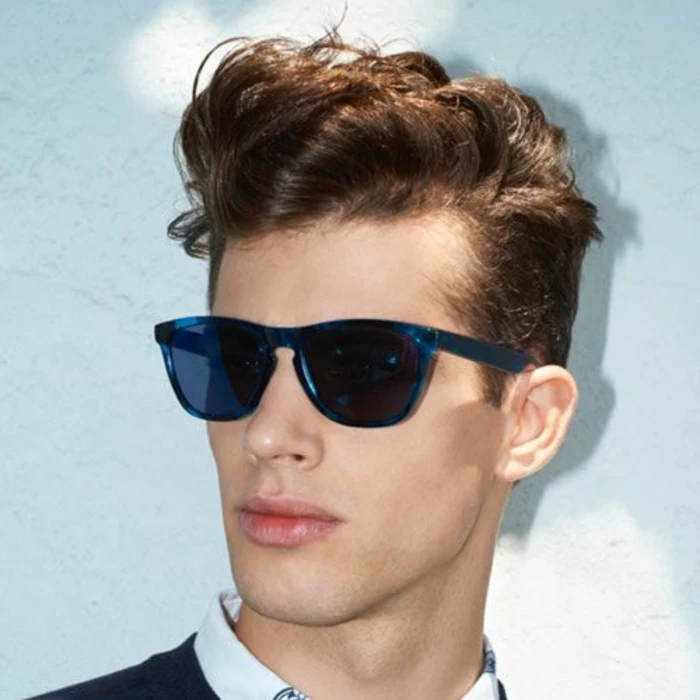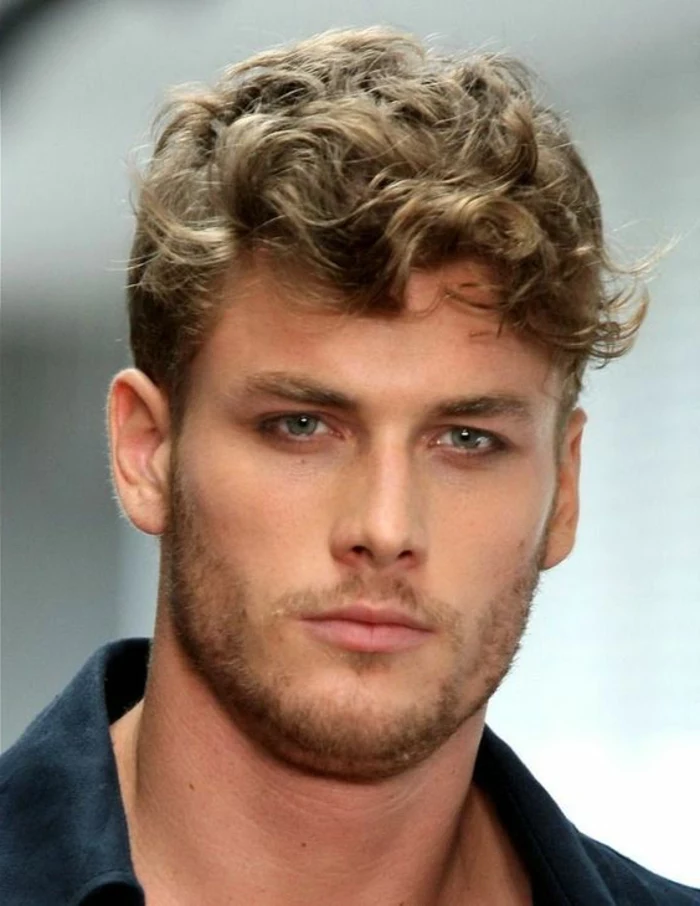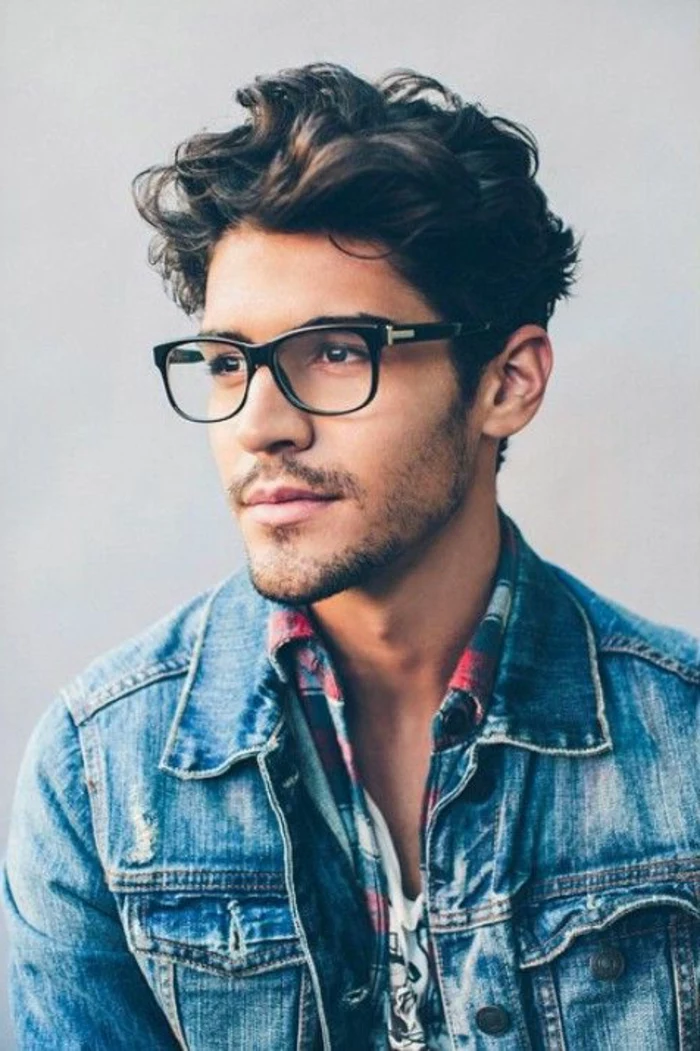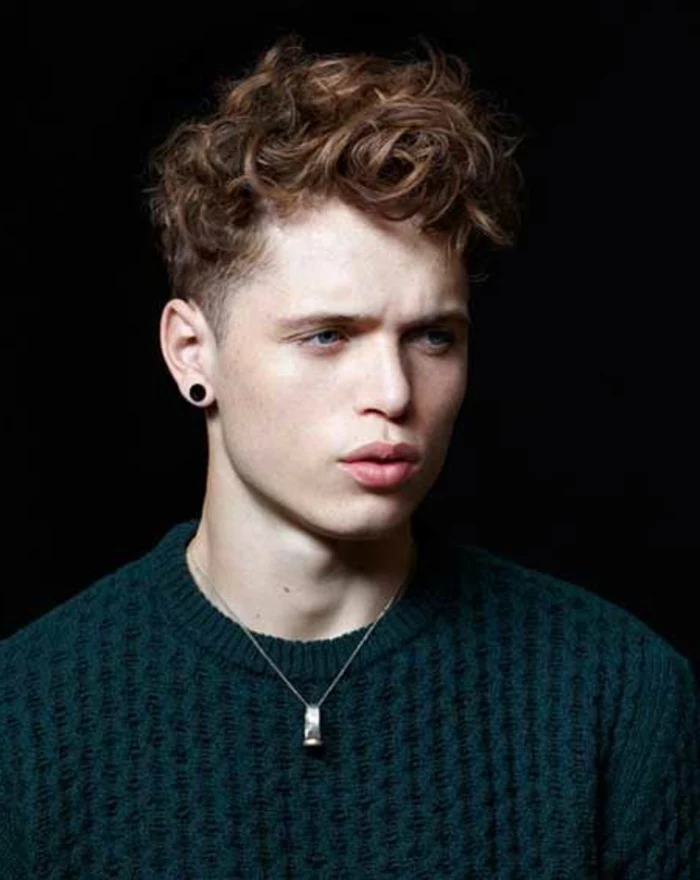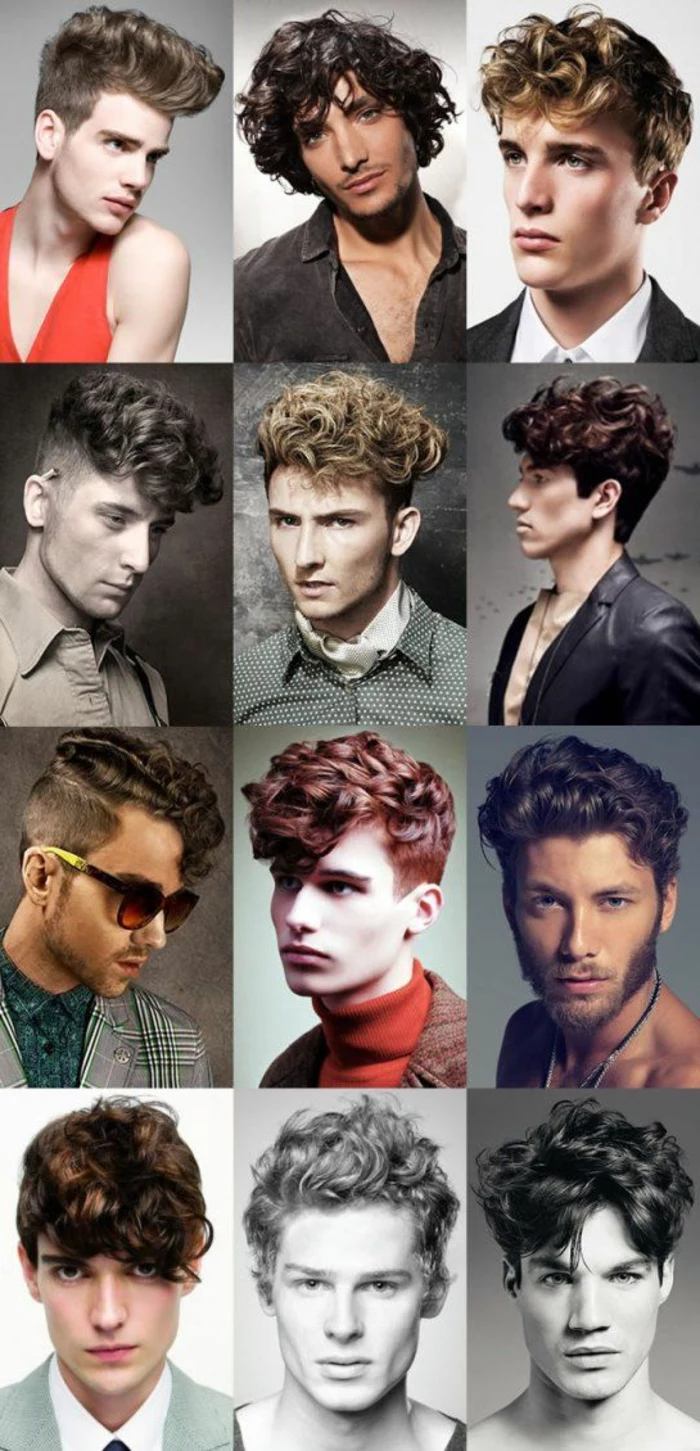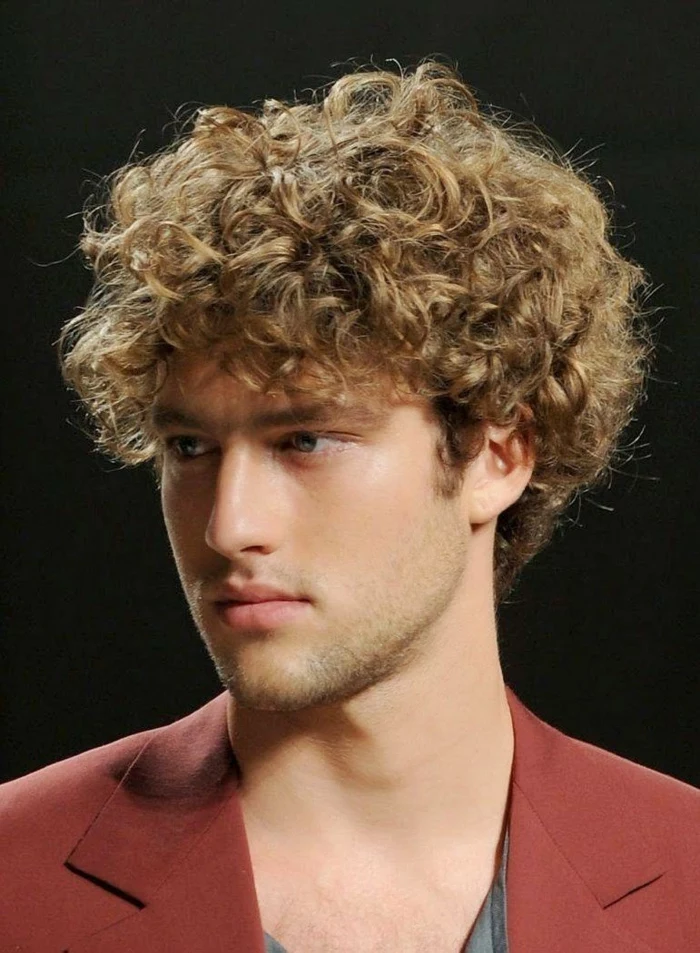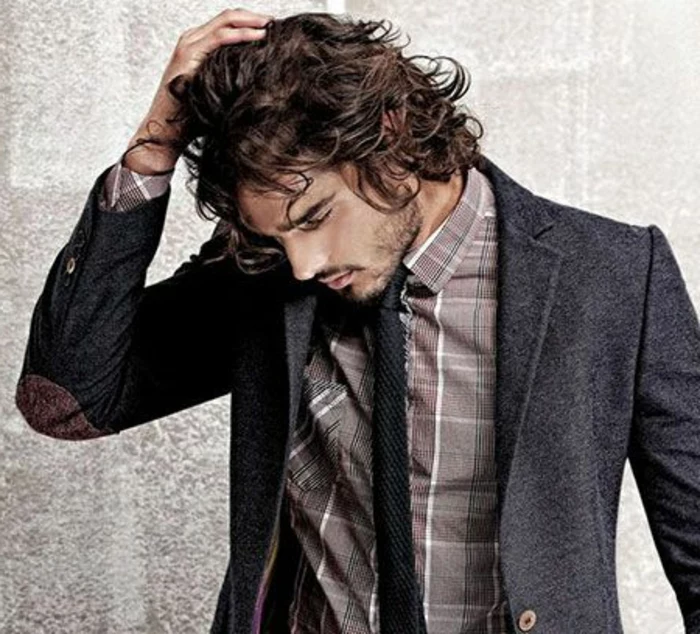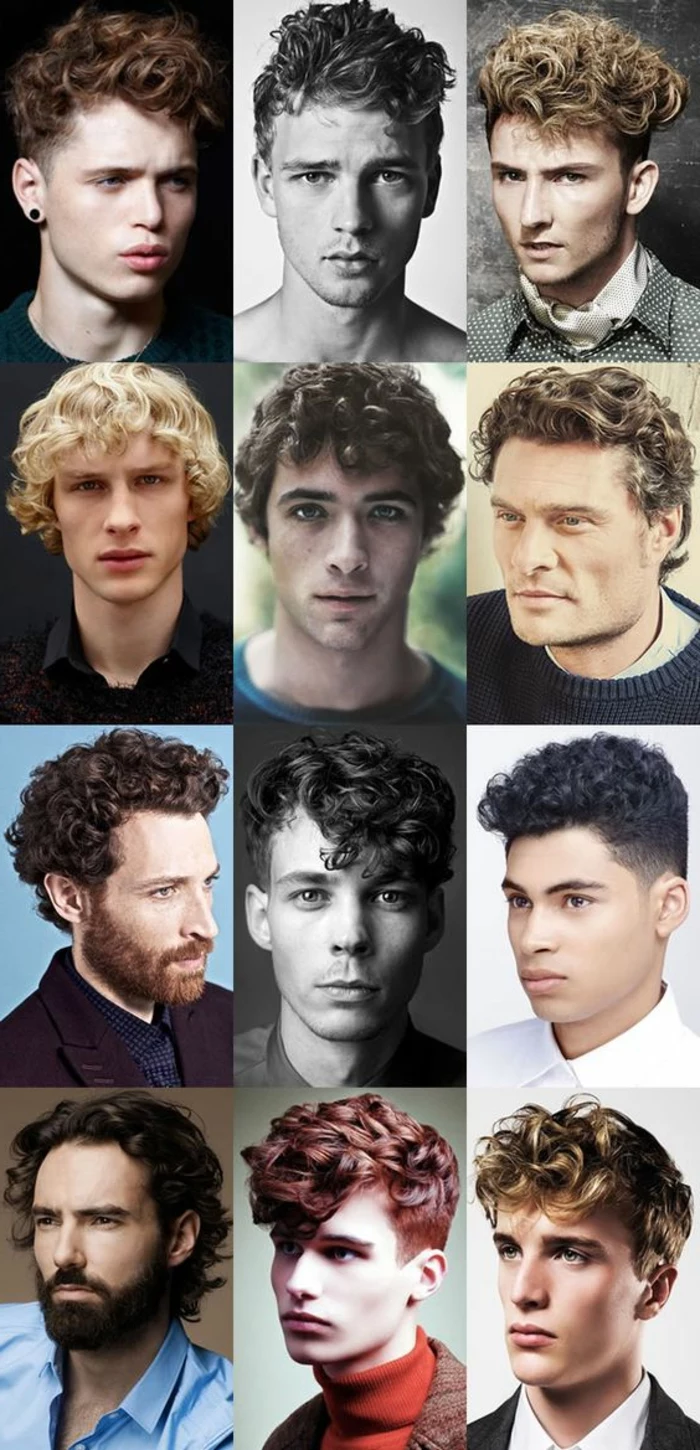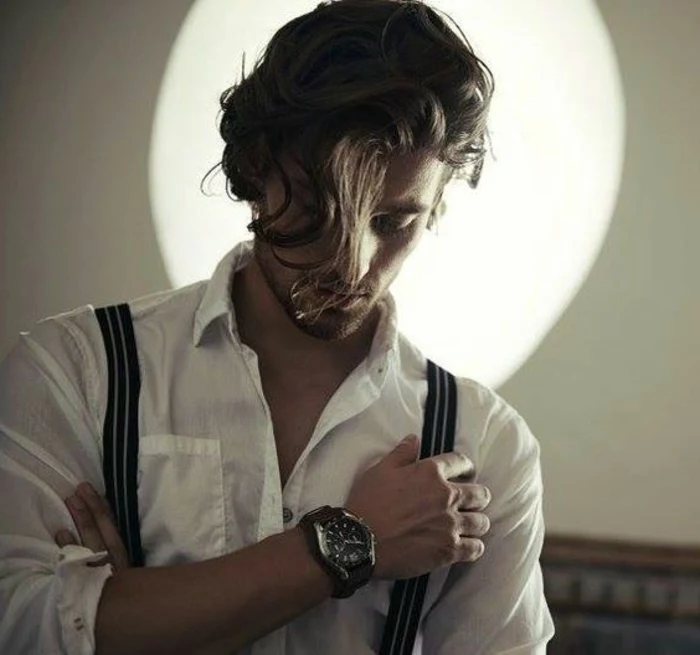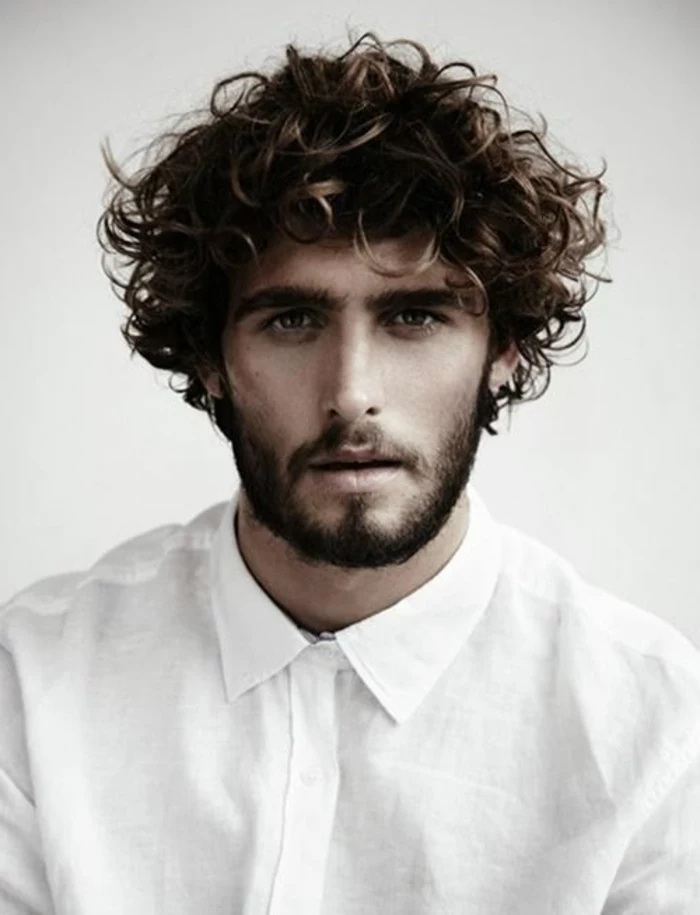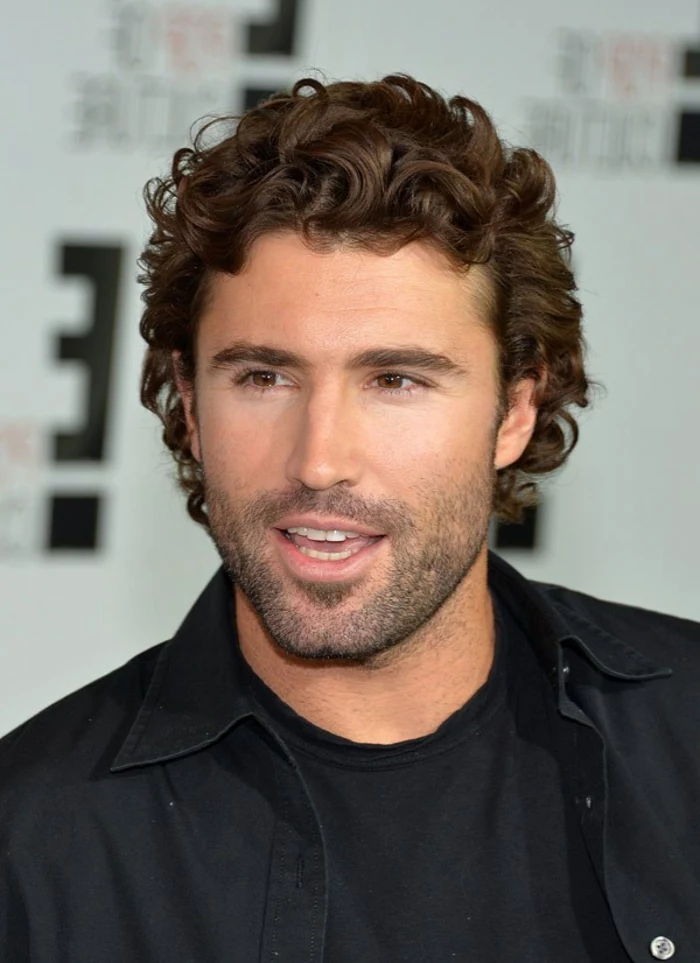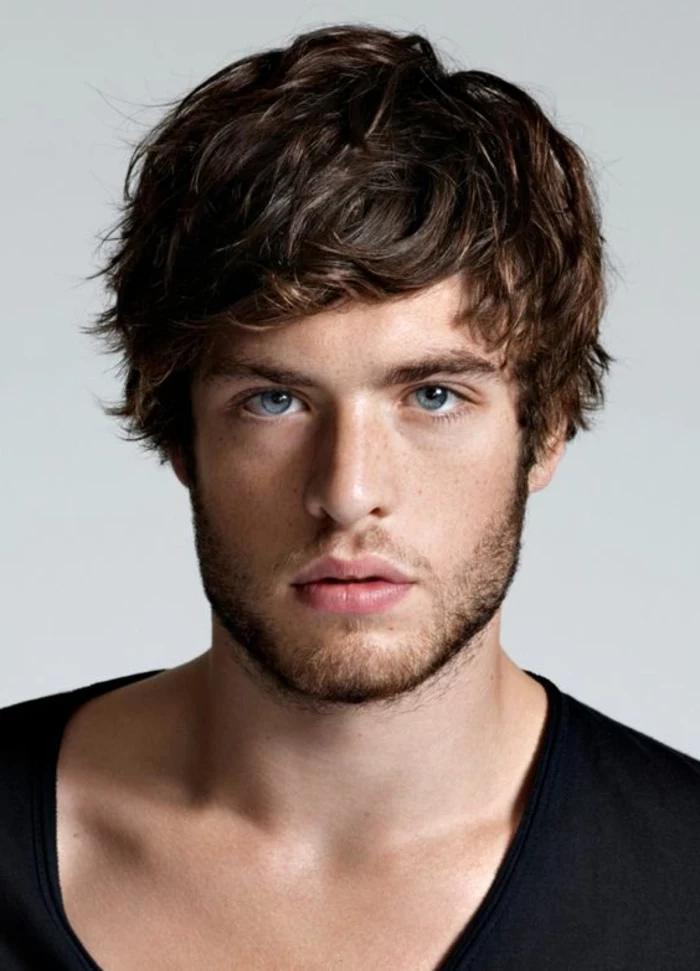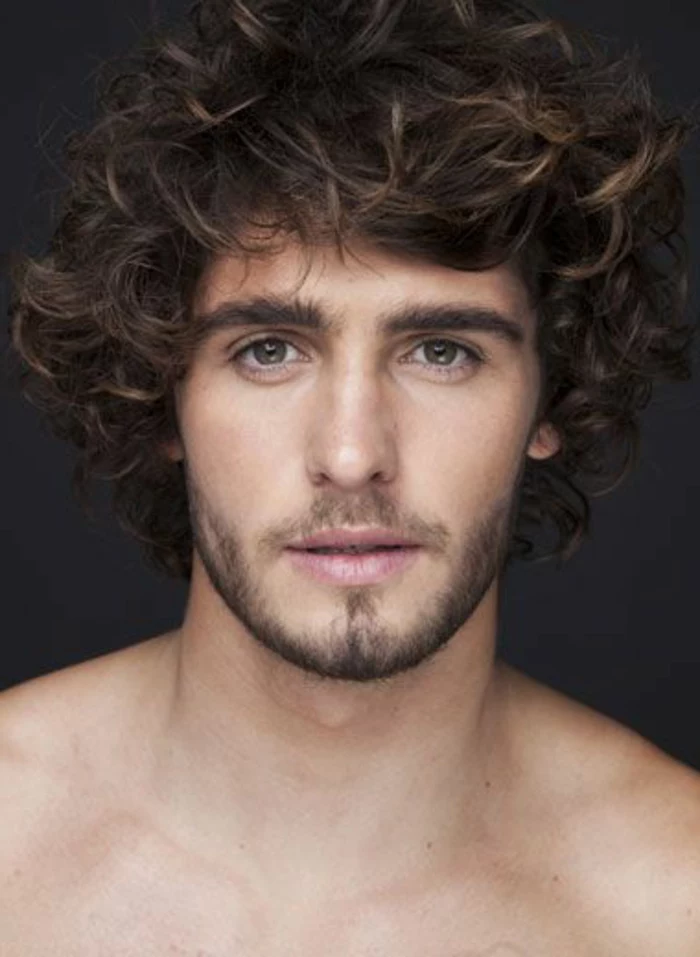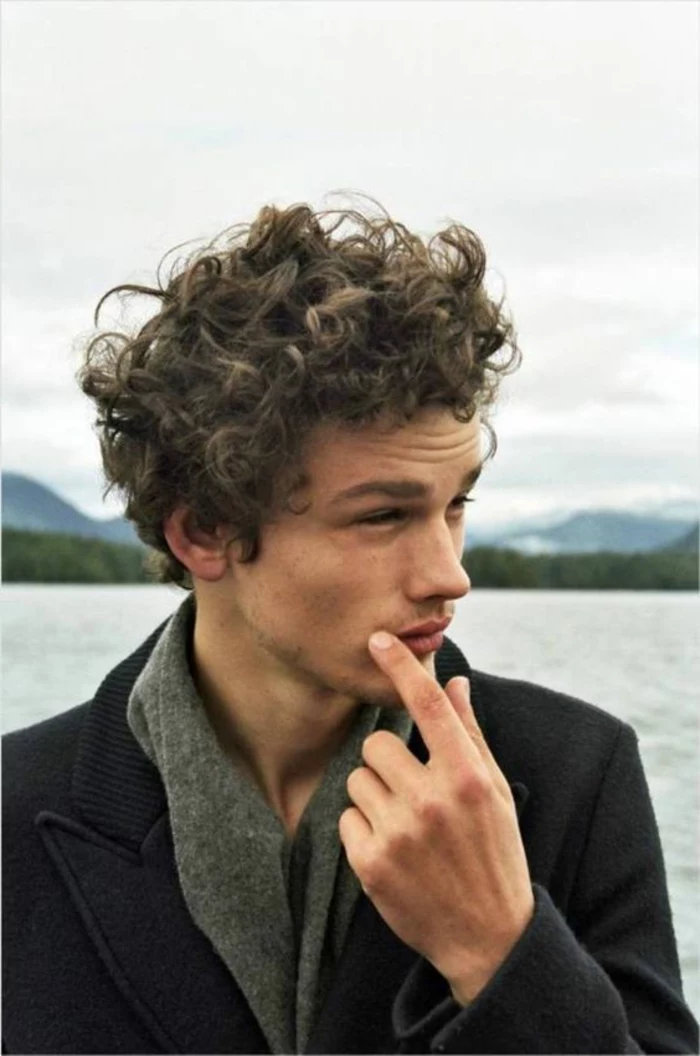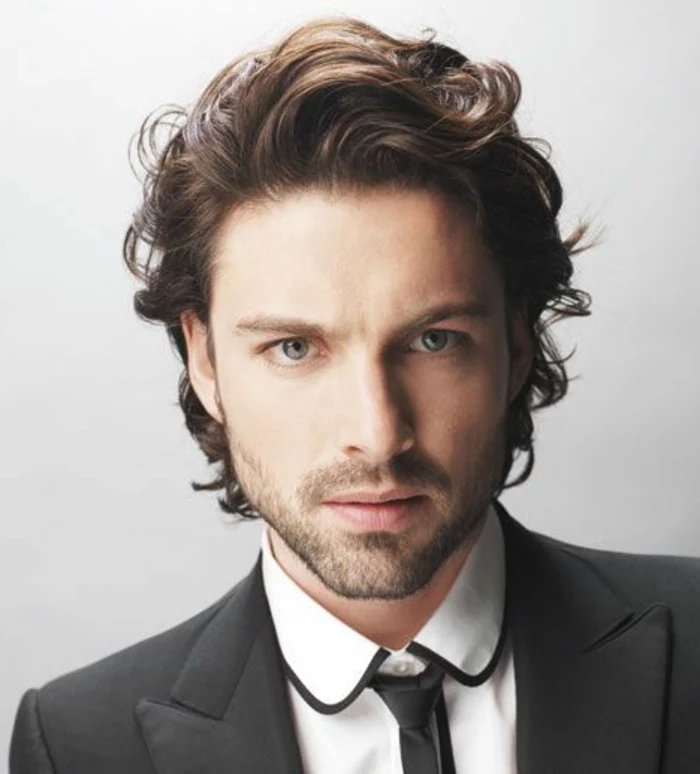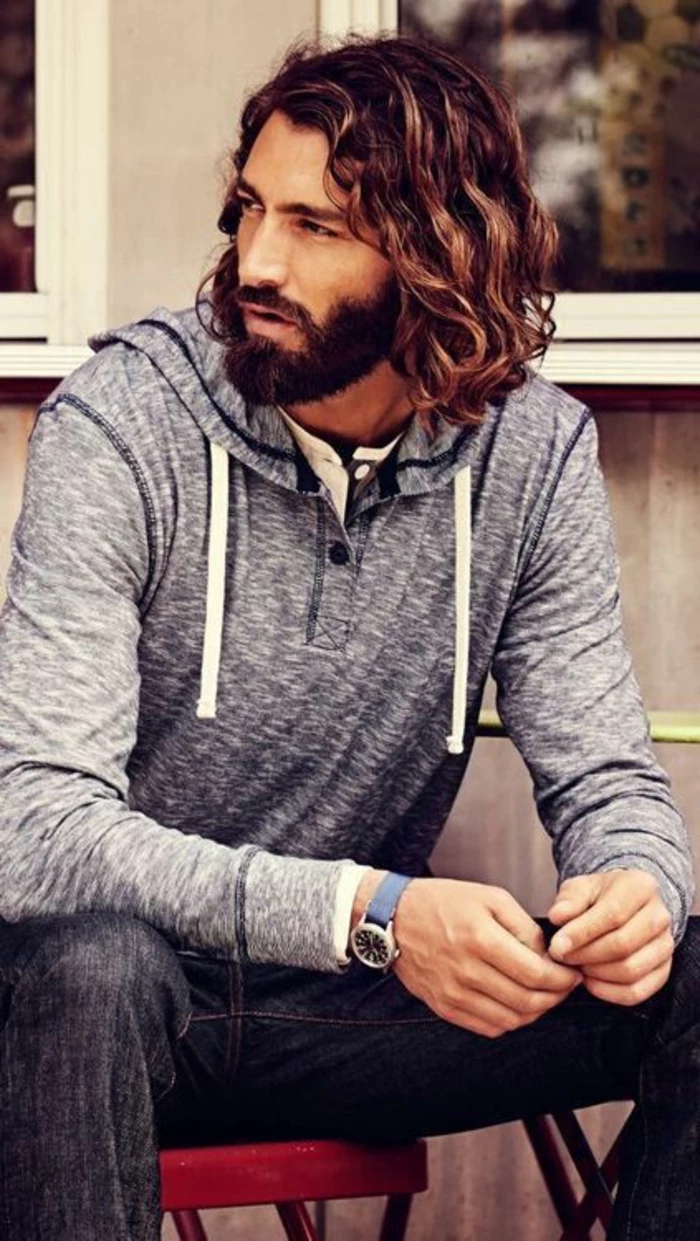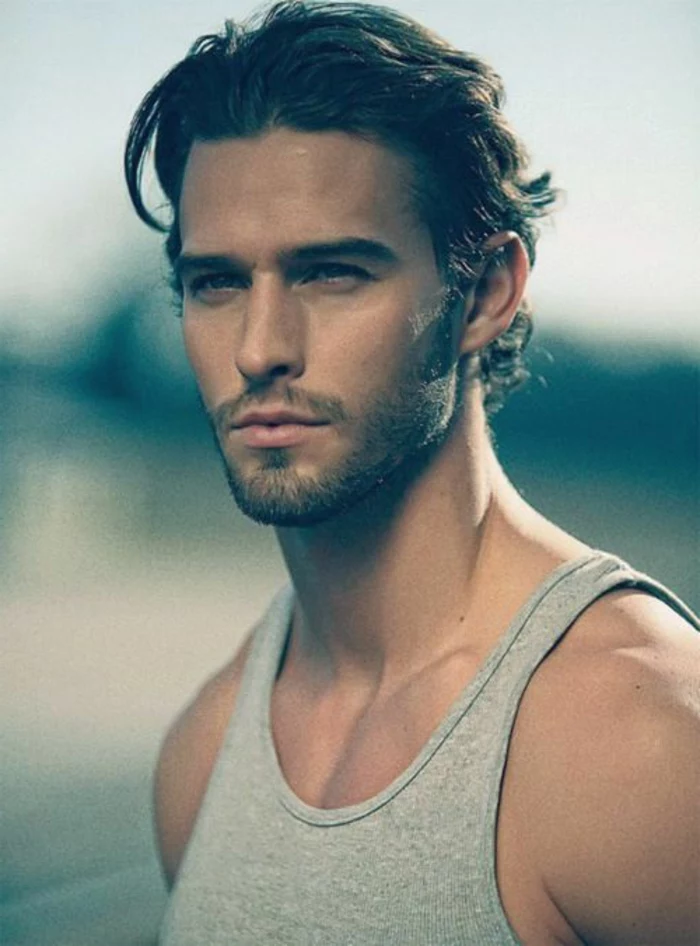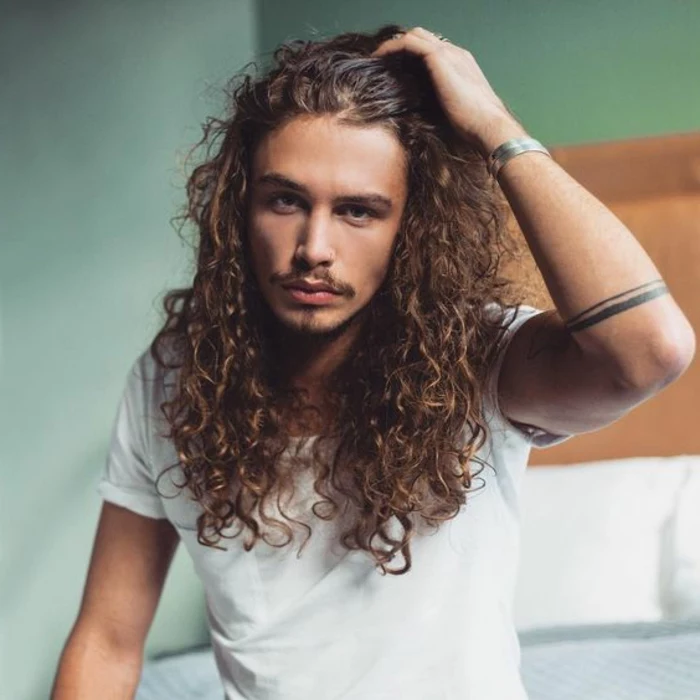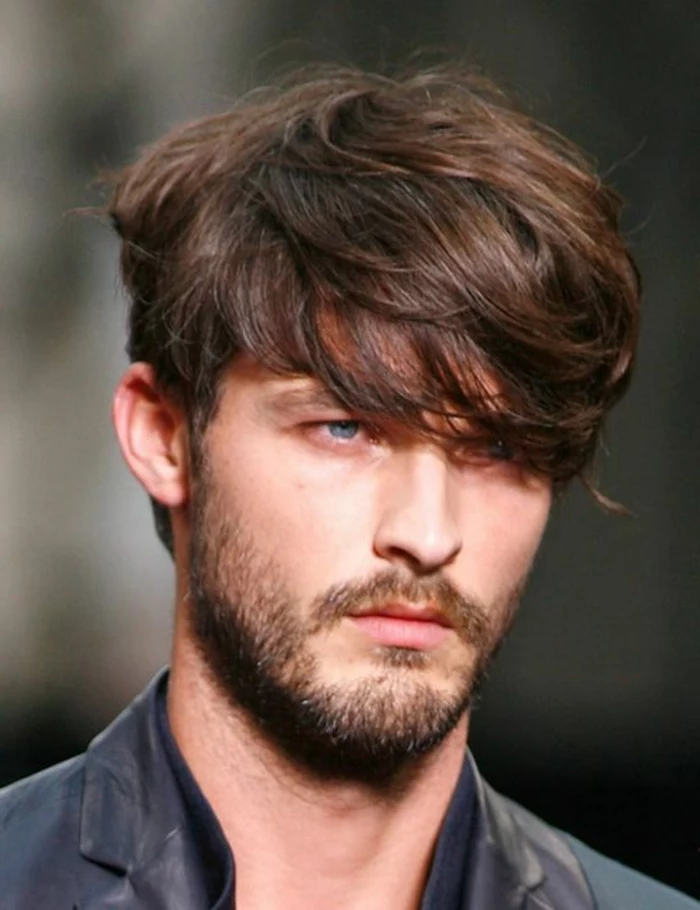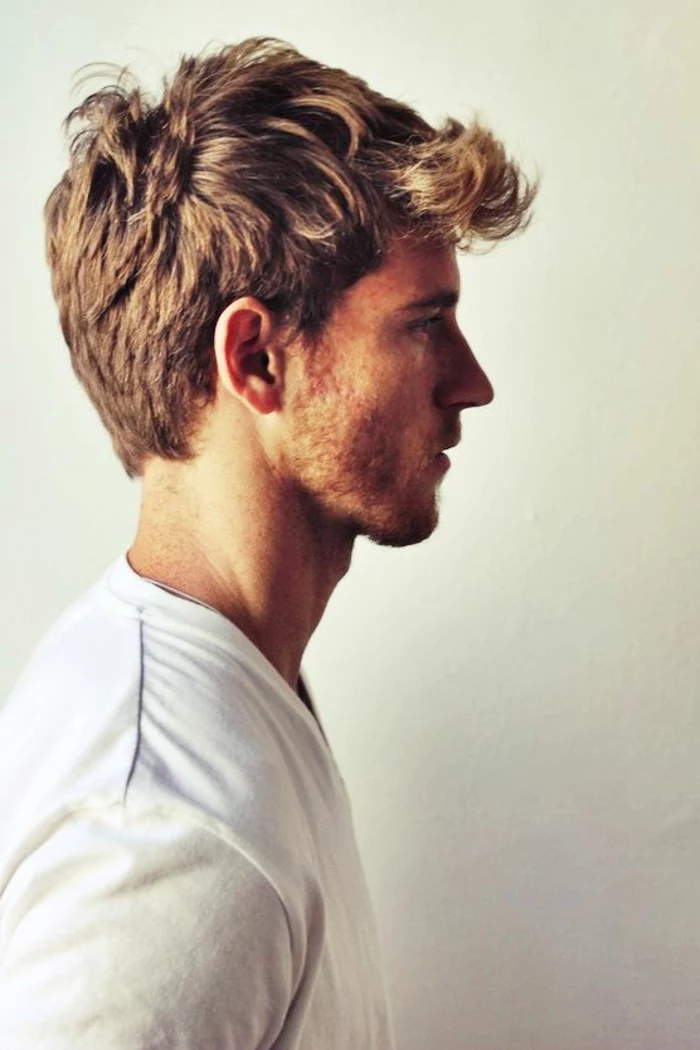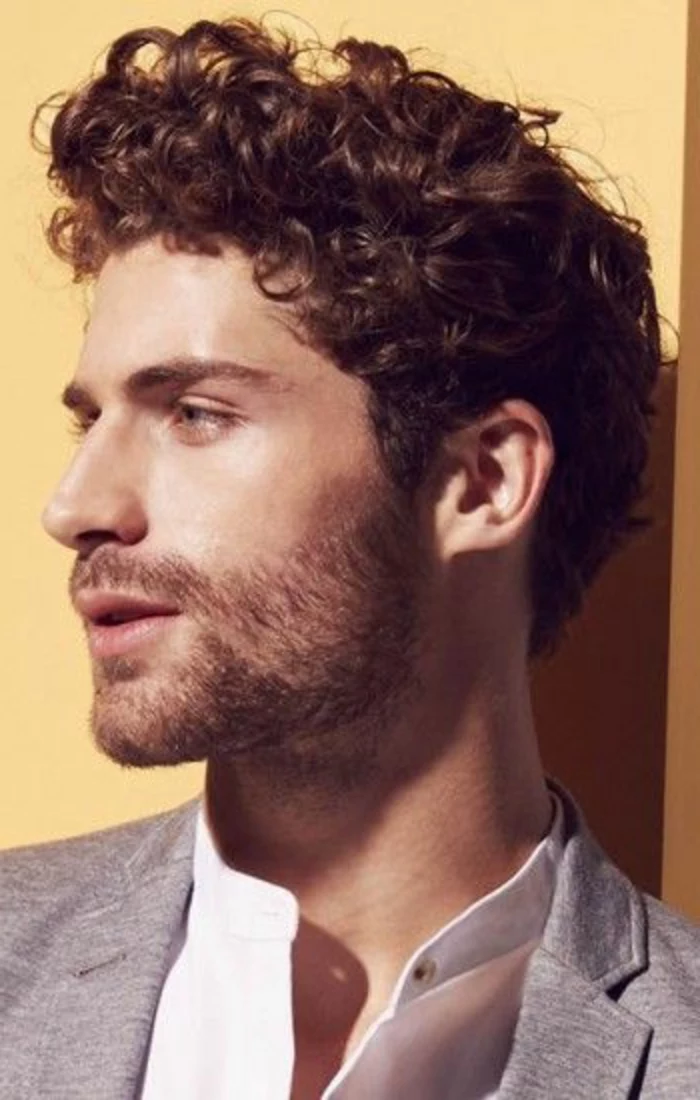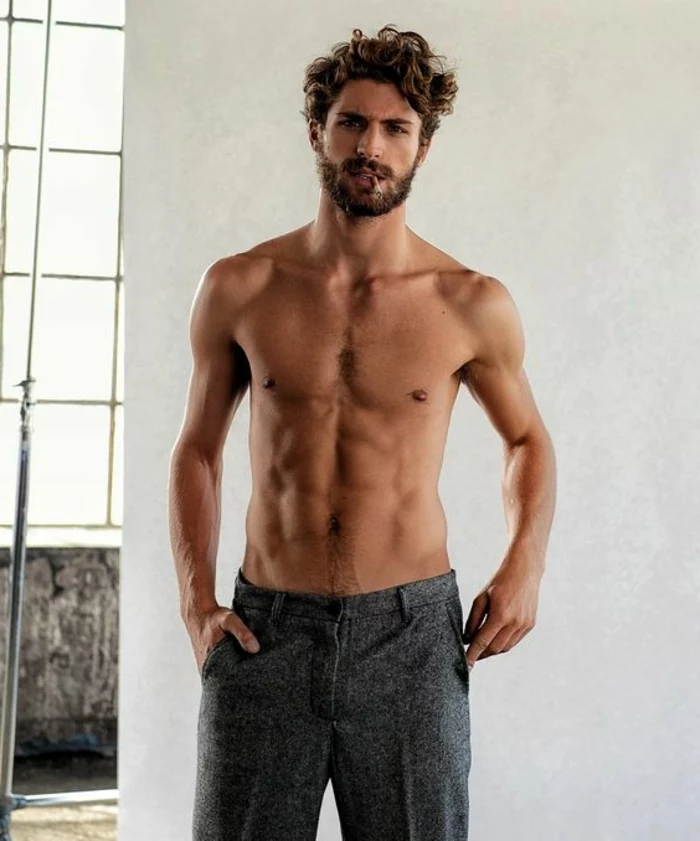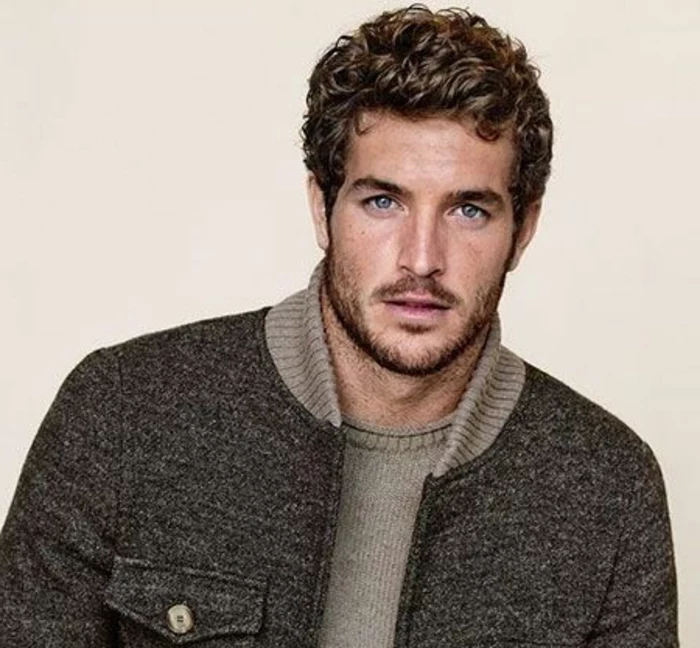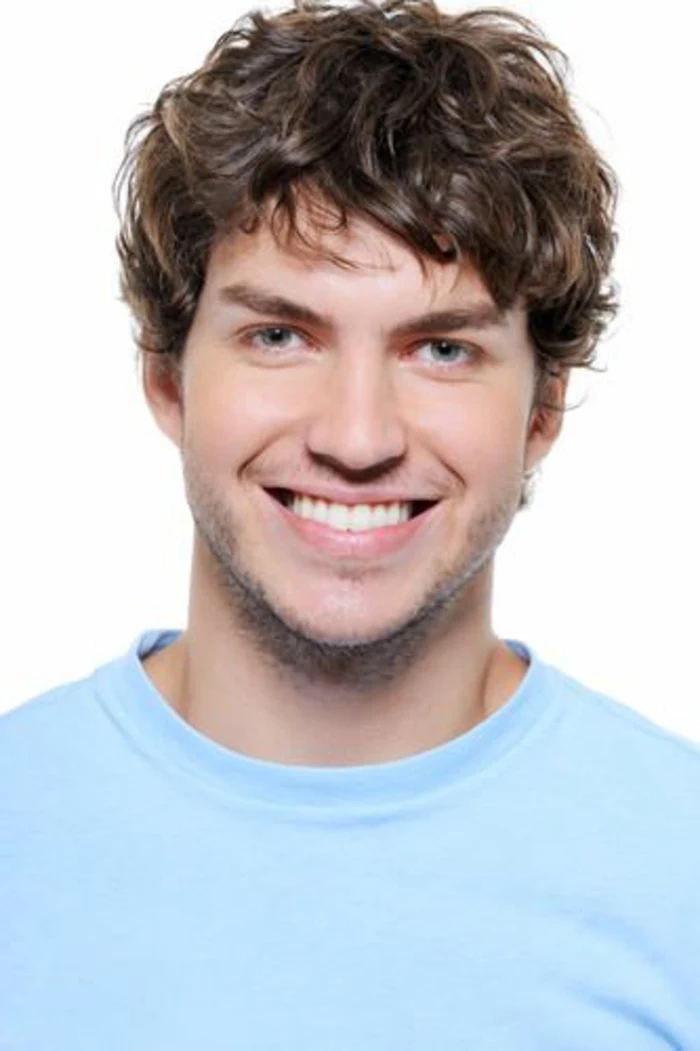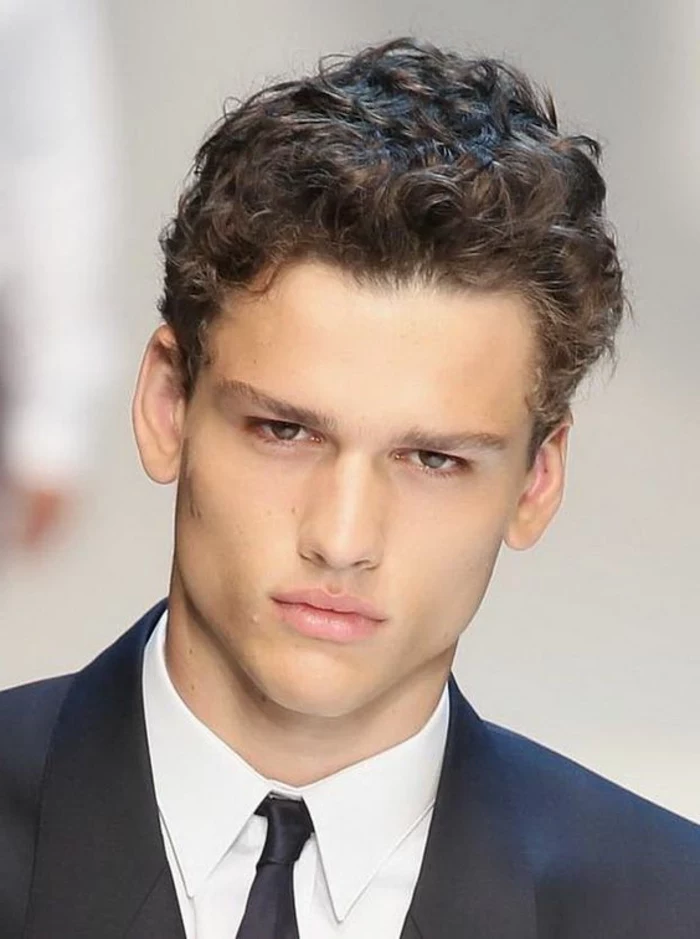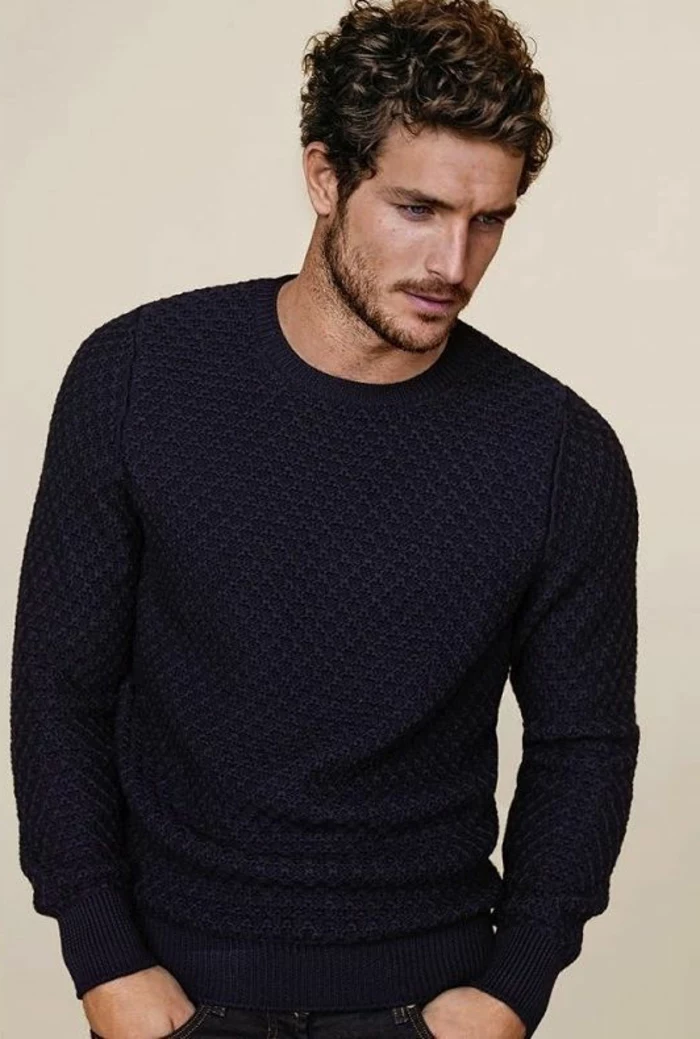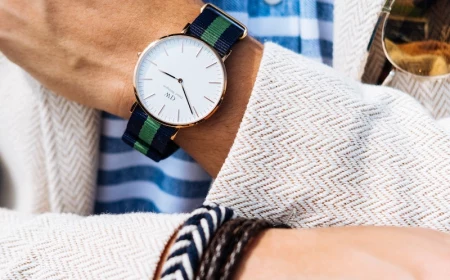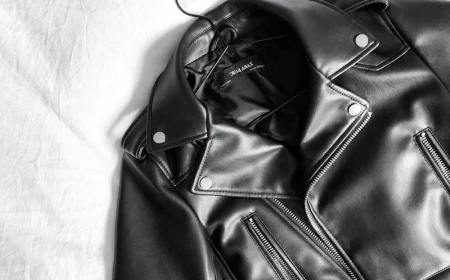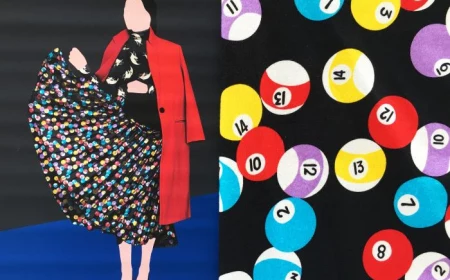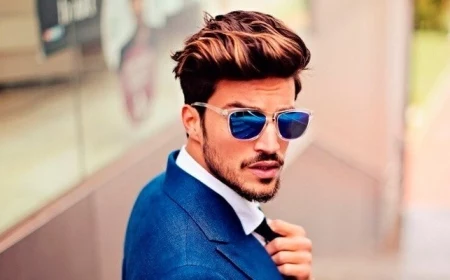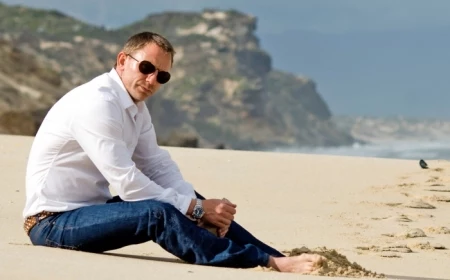A Guy’s No-BS Guide to Actually Liking Your Curly Hair
I’ve had my hands in every hair type imaginable, but let’s be honest, the one that’s the most interesting—and often the most frustrating for guys—is curly hair. I’ve seen so many men walk into the shop, defeated, holding a picture of some celebrity with pin-straight hair. They treat their curls like a problem to be fixed, not a style to be mastered. My goal is to completely flip that script. This isn’t about looking like someone in a magazine; it’s about learning the language your own hair speaks.
In this article
Understanding your curls is the absolute first step. Seriously. Without this foundation, any styling tip or product recommendation is just a shot in the dark. The advice I’m sharing here comes from countless hours behind the barber’s chair and real, honest feedback from thousands of clients. We’re going to get into the nitty-gritty of what makes your hair tick and how to make it work for you.
1. First, Let’s Figure Out What You’re Working With
Before we even think about products or styles, you have to know your hair. A lot of guys are surprised when a consultation starts with a bit of science, but trust me, the basic biology of your hair dictates everything else we do.
Why Your Hair Curls in the First Place
The whole difference between straight and curly hair starts deep down in the scalp. Straight hair grows out of a perfectly round follicle. But curly hair? It grows from an oval-shaped follicle. Because of that asymmetry, the hair is forced to curve as it grows, creating its signature spiral. The flatter that oval is, the tighter your curl pattern will be. This is just biology, and it’s why you can’t “train” your hair to be straight without some serious chemical intervention.
That curve also explains the number one complaint I hear every single day: dryness. Your scalp produces a natural oil, sebum, that’s supposed to travel down the hair shaft to keep it moisturized. For straight hair, that’s a straight shot down a highway. For curly hair, it’s a winding country road with lots of twists and turns, making it nearly impossible for that oil to reach the ends. This is why your ends feel brittle and prone to breakage—they’re literally starved for moisture.

Porosity: The One Thing You Need to Know
Okay, listen up, because this is important. More crucial than your curl pattern (wavy, coily, etc.) is your hair’s porosity. Porosity is simply its ability to absorb and hold on to moisture. It’s a total game-changer, and it’s something most drugstore products completely ignore.
- Low Porosity: This is when your hair’s outer layer, the cuticle, is very tightly packed. It often looks shiny and healthy, but it resists water and products. You’ll notice that water beads up on it and products just seem to sit on top. For guys with this hair type, we need lightweight, water-based products that won’t just coat the hair and cause buildup.
- Medium Porosity: This is the sweet spot. The cuticles are looser, so moisture gets in easily and sticks around for a while. This hair type is usually pretty cooperative and holds styles well.
- High Porosity: Here, the cuticles are wide open, either from genetics or damage (think heat, sun, or bleach). This hair soaks up moisture like a sponge but loses it just as fast, leaving it feeling dry and frizzy. For this type, the goal is to hydrate it and then seal all that moisture in with creams and oils.
Good to know: There’s a super simple test for this. Drop a clean, dry strand of your hair into a glass of room-temperature water. If it’s still floating after a couple of minutes, you probably have low porosity hair. If it sinks slowly, you’re looking at medium porosity. And if it sinks like a rock, it’s high porosity. This one little piece of information is more valuable than any passing trend.
2. Your New Wash and Care Routine
How you wash and dry your hair is 90% of the battle. The wrong moves here can create a frizzy mess before you even think about styling. This is the method I teach every single one of my curly-haired clients.
Washing: Seriously, Less Is More
Because your hair is naturally on the drier side, washing it too often is like pouring sand in a desert. For most guys with curls, I recommend washing only two or three times a week. On the other days? Just rinse it with water in the shower and re-style. If you’re a daily gym-goer, a co-wash will be your new best friend.
A co-wash is just a cleansing conditioner, free of the harsh detergents (sulfates) that create a big lather but strip your hair bare. You can find great ones like the As I Am Coconut CoWash at Target or online for about $8-$10. Use that for most of your washes, and then use a gentle, sulfate-free shampoo about once a week to get rid of any product buildup.

Conditioner Is Not Optional
Conditioner is your moment to give back all the moisture your hair is begging for. But don’t just slap it on and rinse it out two seconds later. You’ve got to do it right.
First, make sure your hair is soaking, dripping wet. This helps spread the product evenly. Work a decent amount of conditioner through—start with a quarter-sized dollop for medium-length hair and add more if needed. Then, gently detangle with your fingers or a wide-tooth comb. NEVER use a regular comb or brush on wet curly hair; that ripping sound you hear is your hair breaking.
Here’s a pro trick we call “squish to condish.” Once the conditioner is in, cup your hands with water and squish it upwards into your hair. You’re looking for a soft, squelchy sound. This physically pushes water and conditioner into the hair cuticle. When you rinse, don’t wash it all out. Leaving a little of that slippery feel behind gives you a built-in layer of moisture to start with.

Drying: Your Bath Towel Is Sabotaging You
EASIEST FIX YOU CAN MAKE TODAY: Ditch your rough bath towel. Seriously. That thing is creating more frizz than you can imagine. The little loops on a terrycloth towel snag your delicate curl patterns and rough them up into a frizzy halo.
Instead, grab an old, clean cotton t-shirt or a microfiber towel. After your shower, gently scrunch the excess water out. Don’t rub! Just cup and squeeze upwards. This encourages your curls to form without frizz. For styling, you can either air-dry or use a diffuser attachment on your blow dryer. A diffuser spreads the airflow out so it doesn’t blast your curls apart. Use it on the lowest speed and lowest heat, drying your hair to about 80% and letting the rest air-dry to prevent frizz.
3. The Right Cut Makes All the Difference
A good haircut is the blueprint for your style, and for curly hair, it’s absolutely critical. A bad cut can leave you with a weird pyramid shape or curls that have a mind of their own. Finding a barber or stylist who genuinely knows curls is an investment in your daily sanity.

How to Spot a Good (and Bad) Barber
Before you let anyone new near your head, do a little recon. Check their Instagram or website. Do they have photos of clients with hair like yours? When you go in for a chat, ask them straight up: “How do you approach cutting curly hair?” If they hesitate or say they treat it just like straight hair, that’s your cue to leave.
Heads up! Here are some major red flags to watch out for:
- They want to cut your hair soaking wet without seeing how it dries.
- They pull out thinning shears or a razor to “de-bulk” your dry hair. (This can shred your curl pattern!)
- They can’t explain how they’re going to layer your hair to work with your curls.
- Their entire portfolio is just straight hair and fades.
A true curl specialist often cuts hair dry, or at least damp. Why? Because curls shrink up as they dry—sometimes a lot! Cutting it dry lets the stylist see exactly how each curl will sit, creating a shape that works with your hair, not against it. Expect to pay more for this expertise, anywhere from $50 to $120+, but it saves you daily frustration.

4. Your Styling Toolkit (Simplified)
The product aisle is overwhelming. Gels, creams, mousses, oils… what’s the deal? The secret isn’t one magic bullet, but understanding how to use a couple of basics correctly.
First, the golden rule: ALWAYS apply products to very wet hair. I mean, right after you’ve scrunched the dripping water out. This locks in the water (the best moisturizer there is) and ensures the product spreads evenly. If your hair starts to dry, just use a spray bottle to re-wet it.
Your Basic Arsenal: Cream vs. Gel vs. Mousse
You really only need a couple of things. Let’s break down the main players:
A Curl Cream is all about moisture and soft definition. It helps condition the hair, fight frizz, and encourage your curls to clump together. The finish is soft and natural, with little to no crunch. If you hate the feeling of product in your hair and just want something that looks touchable, a cream might be all you need.
A Gel is your workhorse for hold and frizz control. And no, we’re not talking about those crunchy, flaky formulas from back in the day. A modern gel forms a
Inspiration Gallery

The enemy of definition: your hands. Once you’ve applied your product and styled your wet hair, the single best thing you can do is… nothing. Keep your hands off it while it dries. Constant touching separates the curl clumps you just created, inviting frizz to the party. Let it dry completely, then gently scrunch or shake it out.
- Less frizz and better curl clumps.
- Hair retains more moisture.
- Drying time can be significantly reduced.
The secret? Ditch your rough terrycloth towel. Instead, gently squeeze water out of your hair using an old cotton t-shirt or a microfiber towel. This method, called ‘plopping,’ protects your fragile curl pattern from being disrupted.
What’s the difference between a curl cream and a gel?
Think of it as a trade-off between softness and hold. A curl cream, like SheaMoisture’s Coconut & Hibiscus Curl Enhancing Smoothie, provides moisture and soft definition for a touchable, natural look. A gel, such as a Kinky-Curly Curling Custard, creates a ‘cast’ around the curls for maximum hold and frizz control, which you then
Did you know? The average man’s scalp produces about half a teaspoon of natural oil (sebum) per day.
For curly hair, that oil has a tough time navigating the twists and turns to reach the ends. This is why a good leave-in conditioner isn’t just an extra step; it’s a necessity to provide the consistent moisture your ends are starved for.
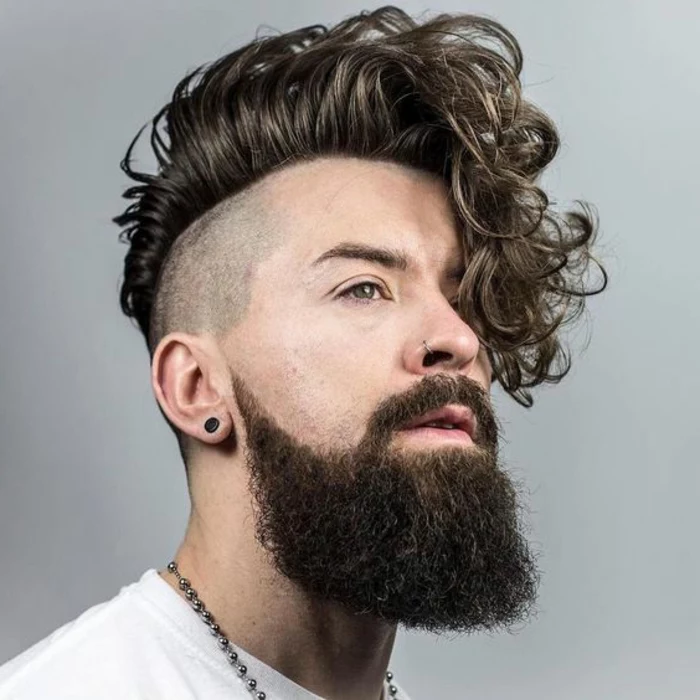
Finding the right barber is half the battle. When you’re looking for a new one, ask them one simple question:
Hard Hold Gel: Great for humid climates and holding a style for days. It creates a strong, protective cast. Think LA Looks Extreme Sport Gel for a budget-friendly option.
Medium Hold Cream-Gel: Offers the best of both worlds—definition from the gel, moisture from the cream. Ideal for guys who want defined but still soft curls. Brands like Briogeo have excellent options.
For most guys starting out, a cream-gel is more forgiving and easier to work with.
- A silk or satin pillowcase reduces friction, preventing frizz and breakage while you sleep.
- The
Ever heard of ‘co-washing’? It means washing your hair only with conditioner. It sounds crazy, but for many guys with coarse, dry curls, it’s a game-changer. You scrub your scalp with a cleansing conditioner (like those from As I Am) just as you would with shampoo. It cleanses gently without stripping the essential oils your curls desperately need.
My hair looks amazing when it’s wet, but turns into a frizzy mess once it dries. What’s wrong?
This is the classic curly hair dilemma. The key is applying your styling products—like a leave-in conditioner and a gel—while your hair is still sopping wet, right out of the shower. This captures the curl clumps as they are defined by the water. If you wait until it’s damp or towel-dried, you’re already too late; the frizz has begun to form.
One key product: a good leave-in conditioner. It’s the primer for your whole style. It provides a base layer of moisture that helps all your other products work better and keeps your hair hydrated long after it dries. It’s the step most guys skip, and the one that makes the biggest difference.
Don’t be afraid of a diffuser. This bowl-shaped attachment for your hairdryer is your best friend for adding volume and speeding up drying time without creating a frizz storm. Here’s the basic technique:
- Use low speed and low-to-medium heat.
- Gently cup sections of your hair in the diffuser bowl, bringing it up to your scalp.
- Hold for 15-20 seconds, then turn the dryer off before moving to the next section.
Want that effortless, just-back-from-the-beach texture? A sea salt spray is your answer. It adds grit and enhances your natural wave without the heavy feel of a cream or gel. It’s perfect for fine or wavy hair that gets easily weighed down. A great one to try is the classic Bumble and bumble Surf Spray, or you can find more affordable versions from brands like OGX.
- More bounce and definition.
- Less frizz halo.
- Your style lasts longer.
The trick? The ‘Praying Hands’ method. Instead of raking product through your hair (which can break up curls), rub it between your palms, then glide your hands down sections of your hair with your palms pressed together as if in prayer. It smooths the product over curl clumps without separating them.
A 2017 study found that searches for
The ‘wet look’ is back, but this time it’s less ’80s music video and more ‘effortlessly cool.’ For curly hair, this is an easy win. Use a combination of a leave-in conditioner for moisture and a strong-hold, high-shine gel. Don’t scrunch out the cast—just let it set for a sleek, defined style that looks intentional and sharp all day long.
Important: There is no ‘one size fits all’ curl type. Your hair might be a mix of 3A waves in the front and tighter 3C coils at the back. Don’t get hung up on a label. The goal is to observe how different parts of your hair behave and treat them accordingly. You might need a little extra cream on drier sections, for example.
Getting a sharp undercut or fade is one of the best ways to style curly hair. It gives you structure and clean lines while letting the texture on top do all the talking. The contrast is modern and masculine. Bring photos to your barber to show them exactly the kind of blend and length you want on top—communication is everything.
I have fine curls that get greasy easily. Are heavy creams for me?
Probably not. If you have finer hair, heavy butters and creams will weigh it down. Look for lighter products like mousses, foams, or lightweight lotions. Brands like DevaCurl and Innersense Organic Beauty offer excellent lighter-weight stylers that provide definition without the grease factor.
- Stop combing it when it’s dry. Ever. This is a guaranteed recipe for a frizzy, undefined mess. Only detangle with a wide-tooth comb or your fingers when your hair is saturated with conditioner.
- Stop using products with high alcohol content (often found in aerosol hairsprays), as they are incredibly drying.
Jojoba Oil: Its molecular structure is the closest to your scalp’s natural sebum, making it a fantastic moisturizer that absorbs easily.
Argan Oil: A brilliant finishing oil. A tiny drop smoothed over dry hair will tame flyaways, add shine, and break up any gel crunch.
A little goes a very long way. Start with one or two drops rubbed between your palms.
The ‘Pineapple’ isn’t just a fruit. For people with curls, it’s the go-to overnight hair-saving technique.
By loosely gathering your hair at the very top of your head, you protect the curls from being crushed and flattened while you sleep. You’ll wake up with most of your volume and definition intact, requiring just a quick shake and refresh in the morning.
Think of your routine in this order: cleanse, condition, style, finish. First, wash and condition in the shower. Then, while your hair is still soaking wet, apply your ‘styling’ products like leave-in conditioner and curl cream/gel. Finally, once it’s 100% dry, you can use a tiny bit of oil or a pick to ‘finish’ the look by fluffing the roots or scrunching out any stiffness.
Cantu Shea Butter Leave-In Conditioning Repair Cream: It’s a cult classic for a reason. It’s thick, incredibly moisturizing, and a little tub costs less than a fancy coffee and will last you for months. It’s the perfect, budget-friendly starting point for guys with thick, dry, or damaged curls.
Don’t underestimate the power of a good haircut to make your curls look their best. Too much length can weigh curls down, while strategic layers can release them and create volume and movement. A regular trim every 8-12 weeks is crucial to snip off dry, split ends and keep your style looking fresh and intentional.


